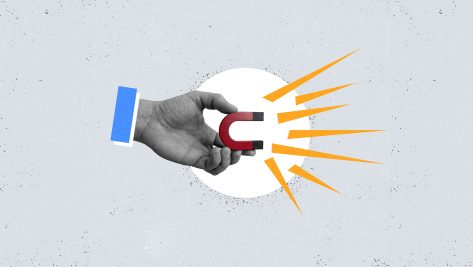Cristina Álvarez: Technology and changing consumer habits are the big disruptions currently affecting the business world. These factors, plus the transformation, have given rise to a different sort of leadership style. Technology has been around for many years, but nowadays the combination of cost and processing capacity is practically marginal. Digitalization is now affordable for any organization.
Borja González: In both the telecommunications world—where you come from, Cristina—and in the energy industry, the change has to do with viewing technology as an investment rather than an expense. However, resources are often allocated without a clear objective. Hence the need for digital leaders: people who know how to shake things up and set goals for the use of tech-based resources.
Cristina Álvarez: People often say that there’s a lot of hype around the digital world. I’ve heard this in many different forums. In my experience, however, very few organizations really bother to reflect on how they want to use these tools. Investing in big data or blockchain doesn’t make you digital; it’s a more reasoned process. The most important thing is the concept of core transformation and its impact on the bottom line.
Borja González: Indeed. Ninety-nine percent of companies are traditional, but they all want to be like Google. How can we compete if we all want to be GAFA? It must be said that not all organizations have the same needs or the same type of customer. Over time, companies have started to grasp the need to develop a strategy that treats technology like any other asset, rather than as an end in itself. The transformation therefore takes on a cultural dimension, which is actually the most important part of the process.
Companies have started to grasp the need to develop a strategy that treats technology like any other asset, rather than as an end in itself. The transformation therefore takes on a cultural dimension.
Cristina Álvarez: That’s the key. Technology is the simplest part of the change. The most complicated part has to do with people. The impact cuts across the entire organization. As consumer habits change, companies must abandon traditional vertical structures, so if they don’t have digital leaders in place throughout the organization, the transformation simply will not happen.
Borja González: And to do that, they have to adapt their discourse. It’s a complex but necessary process to get the various teams to understand each other, with technology as a recurring theme.
Cristina Álvarez: The common language has to be the language of business. In other words, how does a particular tool help to improve the business? Employees with technical profiles in marketing, finance, or human resources need to understand how this transformation process benefits them. It’s a collective journey in pursuit of a common objective. Of course, no one should expect results in the short term.
Borja González: Indeed, it’s a long journey guided by customer satisfaction. You have to turn 180 degrees and focus on the customer. It sounds like a very subtle change, but everything goes along with it. Human resources must identify the talent and skills that are needed to lead teams in this direction.
Cristina Álvarez: Let’s get back to the topic of leadership. It’s been shown that the world’s top-performing companies are those that understand—at every level of the organization—that technology is a factor that will disrupt their business model. We could go on to discuss the level of risk assumed and the speed with which the company acts. No two transformations are the same.
Borja González: I would add another component: honesty. Before you can design a strategy, you need an honest diagnosis: a 360-degree assessment of the organization. Knowing what you have, what you need, where you are, how you got there, and where you want to go—these are key questions in any prior reflection process. Not knowing the starting point is a common mistake.
You have to be the first, even if the product is imperfect. The customer will always buy that convenience.
Cristina Álvarez: This is an internal reflection that each area must undertake. Failure to do so can lead to major fractures during the change process.
Borja González: I agree. Without this sort of internal analysis, there cannot be a proper transformation, just cosmetic changes. Also, it’s important to realize, when you adopt a strategic approach, that many questions without clear answers will crop up along the way.
Cristina Álvarez: Digitalization has prompted a reassessment of the functions of each department. Therefore, no two business areas will move at the same speed. In today’s world, speed is the most important competitive factor in business.
Borja González: And turnaround times are much shorter. Therefore, you also need a different mindset—one that is more flexible with regard to new uncertainties. This brings us to concepts like creativity, experimentation, and curiosity. There is no such thing as failure, only lessons learned.
Cristina Álvarez: The way to learn is by doing. It’s better to have an improvable product on the market than none at all. It provides competitive advantages and agility. But you have to be the first, even if the product is imperfect. The customer will always buy that convenience.
© IE Insights.











